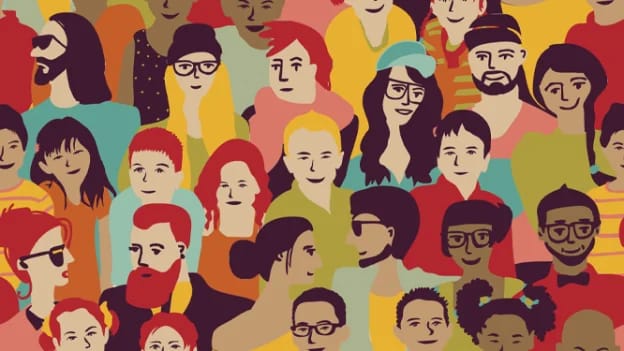Leveraging digital solutions to drive DEI policies and practices

A common assumption among businesses and myself these days is that technology will make lives easier, in terms of both functionality and efficiency. But when it comes to building an equitable workplace, reliance on digital solutions might tell you whether you have achieved your diversity targets. But a change that happens at the grassroot level, a change that is tied up with very human values, expectations and behaviour demands a collaboration between those implementing the technology, the technology itself and the workforce that responds to it. Every organisation is trying its best to create a culture for successful practice of DEI policies but it takes on a different dimension in a world marked by a distributed workforce and rapid digital transformation.
This is why we set out to find answers, real life examples of what is getting done in organisations across regions. In a series of conversations with key stakeholders and leaders in their own right, People Matters gained valuable insights on the use of digital solutions to facilitate DEI, the challenges that remain, the impact of virtual learning programs on the DEI front and what it takes to measure the outcomes of such practices. Here are some of the experiences and advice shared with us.
How have digital solutions been used at your organisation to facilitate DEI initiatives?
‘Diversity, equity and inclusion (DEI), at its very core, is about people. And human connection is vital in facilitating these initiatives. Yet, our increasingly distributed workforce could make this harder. We now need to be more aware of the divide between remote and in-person workers. Remote workers may feel like ‘second-class citizens’ as compared to their counterparts in the office. They may miss important in-room interactions, and they may struggle to keep up with the meeting flow.
Here, technology plays an important role in balancing the playing field and solving the problem of meeting inequality. Advancements in video collaboration technology have dramatically improved the meeting experience. AI is used in video conferencing systems to automatically reduce noise and adjust light conditions. Recent innovations include automated camera control which leverages AI to auto frame all participants to get zoomed-in view of attendees and the active speaker at the same time. Such technologies ensure that remote participants see and hear all meeting exchanges clearly, allowing them to collaborate with their onsite counterparts on equal footing regardless of location.’
-Wiley Zhang, Head of Video Collaboration, Asia Pacific and Japan, Logitech
‘Digital recruitment not only eases out the entire hiring process but also supports employing the right people with any prejudices of any kind. That’s why we can see that a lot of companies are investing in digital solutions that anonymize and randomise to minimise the impact of unconscious bias on the hiring process.Some digital solutions even help with candidate sourcing, ensuring that qualified people from underrepresented groups are included.’
-Akanksha Tripathi GM - Human Resource, Xapads Media
What are some of the challenges that have come up in using these solutions?
‘While technology is a great enabler, it comes with its own intricacies. Machines cannot think in a humane manner, while there is a good amount of data being fed, there are chances of bias and computational errors which can have a massive impact on the process. There are some tech solutions that are using machine learning, deep learning, and reinforced learning to tackle this issue but we are still far from creating a seamless experience that can match personal touch. Overall, the value of human interaction will always be crucial and foremost to the HR process.’
-Pallavi Dhawan Gupte, Director -People Team , Dun & Bradstreet India
What are some loopholes leaders need to be wary about when implementing DEI strategies?
‘Organisations need to be careful about implementing strategies that oversimplify the challenge, which may result in further marginalisation of already marginalised groups. For example, a “women first” strategy may seem like a good idea: to inculcate better gender representation, however often it may end up only benefiting hetro, cis-gender, able-bodied women. Organisational leaders therefore need to be more in tune with the nuances and be ready to adjust their strategies to ensure that the problem of further marginalisation won’t be exacerbated. Achieving true diversity is a continuous journey, not a one-off destination. Constant engagements and dialogue with employees and the proper data analysis from these engagements is key.’
-Katharine Barnett, Senior Director, Employee Success, Oracle JAPAC
‘One challenge I have observed when implementing DEI practices is leaders thinking that diversity is just referring to gender and race. It is more multifaceted than that. There are other aspects to take into consideration when implementing DEI, including but not limited to sexual orientation, language, socio-economic background and geographical location. The pandemic has also created new inequalities such as proximity bias, favouring those in the office. With the way we work changing so quickly, it is crucial that DEI initiatives remain fluid and are able to evolve with the requirements of this Virtual First workforce.
A common loophole that leaders use when implementing DEI practices, particularly for global organisations, is taking on a one-size-fits-all approach. It is essential that leaders understand that not every market operates the same way, and that there are cultural and social nuances to consider. This is why it is important for leaders to stay connected with their teams on the ground - to ensure that local DEI needs are being recognised and represented across the organisation, at every level. Conversation and action have to take place simultaneously for genuine change to take place.
DEI is not just a one-off project where policies are written and training is provided. It has to be integrated into the fabric of decisions and processes. It needs to be part of an organisation’s recruitment practices, career progression, communication, behaviour, leadership and product development.’
-Pia Broadley, Head of APAC, Dropbox
With data increasingly being used to capture the diversity element of a workplace and to drive efforts at inclusion, what are some of the initiatives regarding data and people analytics in place at your workplace?
‘We make it a commitment to be transparent in communicating results of our surveys and initiatives, so there is always accountability. We don’t just listen for the sake of listening. There is also a protocol that there needs to be company-wide communication as well as team-level deep dives - even for high-performing teams. It’s important that everyone is aware of the state of DEI in their own company, as the first step towards improving it. After all, culture does not belong only to the C-suite or leaders - each person needs to be responsible and accountable in building an inclusive culture.’
-Sonali Sharma, VP-People Science, EngageRocket
How impactful are virtual learning programs to sensitise the workforce and leadership towards being more inclusive?
‘Virtual learning programmes have a strong impact on helping my team raise awareness around DEI practices, especially since work is no longer confined to an office or space in this new way of working. For example: We arranged an associate well-being education series that focused on issues that affect associate well-being and the topics were selected with input from our Diversity and Inclusion (D+I) Communities.
It is interesting to note that we have received a very encouraging response from our associates for many of our virtual DEI sessions. Last year, our Neurodiversity team in APAC ran a virtual event titled 'Neurodiversity: What Is It & Why Should You Care?’ and we received very positive feedback from the attendees. On World Mental Health Day last October, we organised a virtual panel session with industry speakers to discuss insights and experiences in mental health to raise awareness, fight stigma, and foster conversation around mental health. That too was well attended and fostered a good dialogue. We realised that as we all work virtually, there is an increasing interest from associates to come together to participate and share their feedback for such learning sessions.’
-Guna Chellappan, General Manager, Singapore, Red Hat
‘When employing DEI learning programmes, virtual or in-person has not been found to be as relevant as the use of innovative, engaging, and interactive approaches to heightening DEI awareness. For example, a 2017 Harvard Business Review article titled “Two Types of Diversity Training that Really Work” recommends a) employing “perspective-taking” exercises during which participants write a few sentences imagining the distinct challenges another demographic group might face and b) incorporating a goal-setting exercise during which participants write down personal commitments related to diversity in the workplace.’
-Loreal Jiles, Vice President, Research and Thought-leadership, Institute of Management Accountants
How do you measure and quantify the impact of DEI efforts?
Jiles also added, ‘DEI efforts can be measured and quantified through targeted indicators and metrics that assess not only the representation of diverse talent but also equity, inclusion, and progress toward a culture of belonging. The impact of DEI efforts aimed at increasing diversity can be measured by the tracking of the demographic composition of new hires, all staff, staff promoted, and those leaving the organisation. Reviewing the promotion and hiring data, in particular, will aid in evaluating equity. Inclusion and a culture of belonging or often measured through bias-related incident reporting statistics, participation of diverse talent in organisational events, projects, or business decisions, and collecting employee perceptions through ongoing anonymous employee surveys.’









